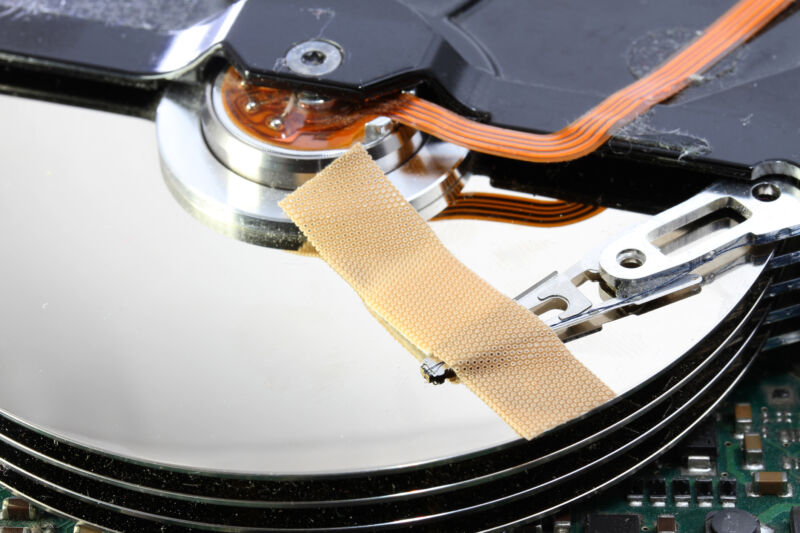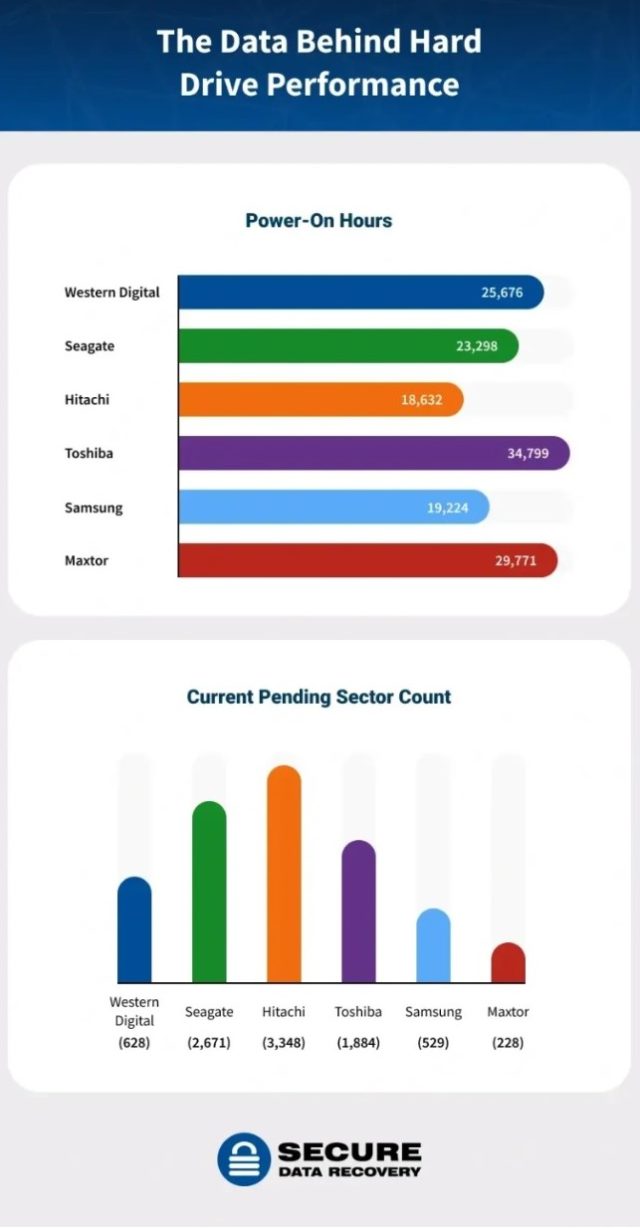
Update 3/24/2023: Secure Data Recovery provided us with a little more information on the defective HDDs tested. It said that 37 percent of the Western Digital and Seagate drives analyzed featured SMR. The firm found that, "Western Digital's SMR models had a 12.7 percent shorter lifespan than their CMR counterparts, [and] Seagate's SMR models had a 19.7 percent shorter lifespan than their CMR counterparts," when looking at average power-on hours. Further, eight of the 13 SMR drives from Western Digital and Seagate registered fewer than 15,000 power-on hours on average.
Original article follows.
An analysis of 2,007 damaged or defective hard disk drives (HDDs) has led a data recovery firm to conclude that "in general, old drives seem more durable and resilient than new drives."
The statement comes from a Los Angeles-headquartered HDD, SSD, and RAID data recovery firm aptly named Secure Data Recovery that has been in business since 2007 and claims to have resolved more than 100,000 cases. It studied the HDDs it received in 2022. "Most" of those drives were 40GB to 10TB, according to a blog post by Secure Data Recovery spotted by Blocks & Files on Thursday.
Secure Data Recovery's March 8 post broke down the HDDs it received for data recovery by engineer-verified "power-on hours," or the total amount of time the drive was functional, starting from when its owner began using it and ending when the device arrived at Secure Data Recovery.
The firm also determined the drives' current pending sector count, depicting "the number of damaged or unusable sectors the hard drive developed during routine read-and-write operations." The company's data doesn't include HDDs that endured non-predictable failures or damage by unexpected events, such as electrical surges, malware, natural disasters, and "accidental mishandling," the company said.
Among the sample, 936 drives are from Western Digital, 559 come from Seagate, 211 are Hitachi brand, 151 are Toshiba's, 123 are Samsung's, and there are 27 Maxtor drives. Notably, 74.5 percent of the HDDs came from either Western Digital or Seagate, which Secure Data Recovery noted accounted for 80 percent of hard drive shipments in 2021, citing Digital Storage Technology Newsletter data shared by Forbes.

The average time before failure among the sample size was 2 years and 10 months, and the 2,007 defective HDDs had an average of 1,548 bad sectors.
"While 1,548 bad sectors out of hundreds of millions or even billions of disk subdivisions might seem minuscule, the rate of development often increases, and the risk of data corruption multiplies," the blog said.
Secure Data Recovery isn't the only company using its business to look for storage insight. As Blocks & Files pointed out, backup and cloud storage company Backblaze uses hard drives that surpass the average life span Secure Data Recovery saw among the HDDs clients sent it last year. At the end of 2022, Backblaze's 230,921 hard drives had an average age of 3.6 years versus the 2-year, 10-month average time before failure among the drives Secure Data Recovery worked on last year. Obviously, Backblaze's sample size is much larger. Further, its analysis is much more detailed, breaking down HDD failure rate trends model by model. The discrepancies show the challenges in pinpointing exactly when an HDD may fail you and, thus, the importance of data backup.
Older drives show better durability?
If you've been feeling like HDDs aren't built to last as long as they used to be, you're not alone. Secure Data Recovery's blog suggested a relationship between when an HDD was made and how long it lasted before failing.
We found that the five most durable and resilient hard drives from each manufacturer were made before 2015. On the other hand, most of the least durable and resilient hard drives from each manufacturer were made after 2015.
Unfortunately, Secure Data Recovery didn't specify what it meant by "most." But it did point to HDD manufacturers pushing the performance envelope as a reason why HDD reliability may have dipped with more recent products. This includes size limits that cut "allowance between moving parts, appearing to affect mechanical damage and wear resistance."
Secure Data Recovery also blamed a three-letter acronym that has nearly become a four-letter word to storage users in 2020: SMR. The revelation that various brands, including Western Digital, Seagate, and Toshiba, clandestinely sold devices with shingled magnetic recording disks instead of CMR (conventional magnetic recording) disks shocked consumers, and Western Digital even ended up paying $2.7 million in a class-action lawsuit.
While users were primarily upset that drives leveraging SMR offered slower random write speeds than drives using CMR, Secure Data Recovery also believes that SMR impacts HDD reliability, as the disks place components under "more stress."
reader comments
124